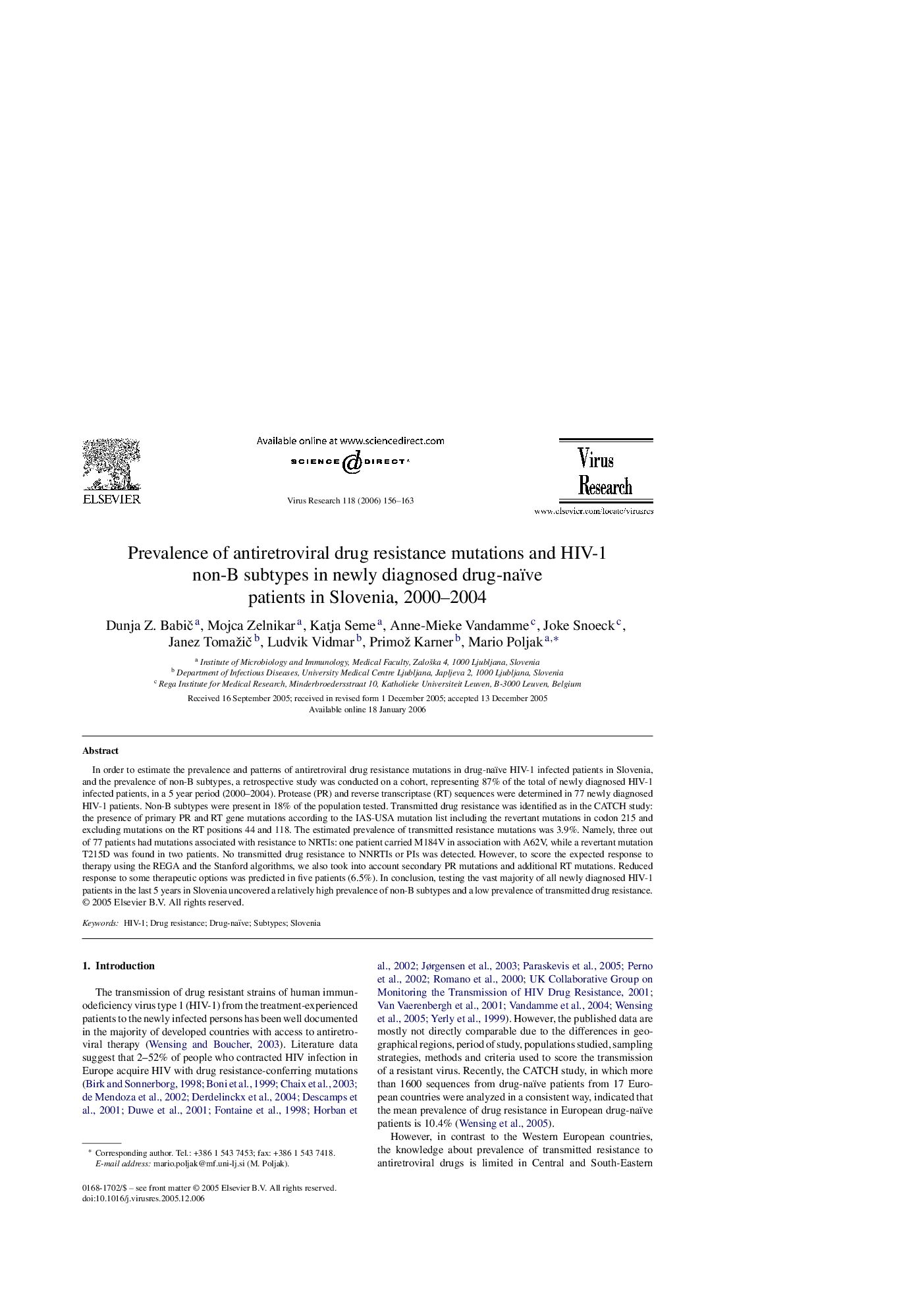| Article ID | Journal | Published Year | Pages | File Type |
|---|---|---|---|---|
| 3431352 | Virus Research | 2006 | 8 Pages |
In order to estimate the prevalence and patterns of antiretroviral drug resistance mutations in drug-naïve HIV-1 infected patients in Slovenia, and the prevalence of non-B subtypes, a retrospective study was conducted on a cohort, representing 87% of the total of newly diagnosed HIV-1 infected patients, in a 5 year period (2000–2004). Protease (PR) and reverse transcriptase (RT) sequences were determined in 77 newly diagnosed HIV-1 patients. Non-B subtypes were present in 18% of the population tested. Transmitted drug resistance was identified as in the CATCH study: the presence of primary PR and RT gene mutations according to the IAS-USA mutation list including the revertant mutations in codon 215 and excluding mutations on the RT positions 44 and 118. The estimated prevalence of transmitted resistance mutations was 3.9%. Namely, three out of 77 patients had mutations associated with resistance to NRTIs: one patient carried M184V in association with A62V, while a revertant mutation T215D was found in two patients. No transmitted drug resistance to NNRTIs or PIs was detected. However, to score the expected response to therapy using the REGA and the Stanford algorithms, we also took into account secondary PR mutations and additional RT mutations. Reduced response to some therapeutic options was predicted in five patients (6.5%). In conclusion, testing the vast majority of all newly diagnosed HIV-1 patients in the last 5 years in Slovenia uncovered a relatively high prevalence of non-B subtypes and a low prevalence of transmitted drug resistance.
